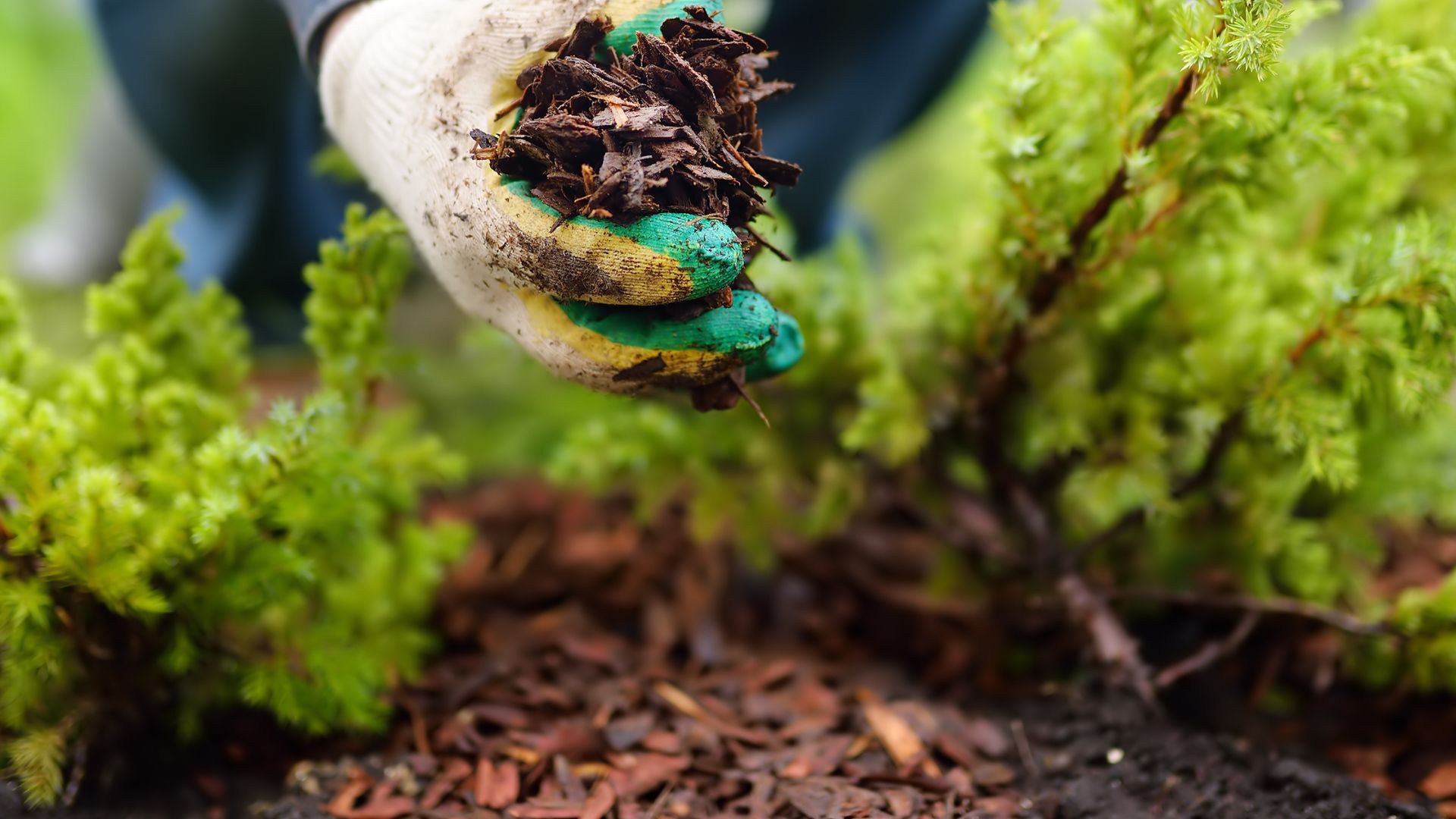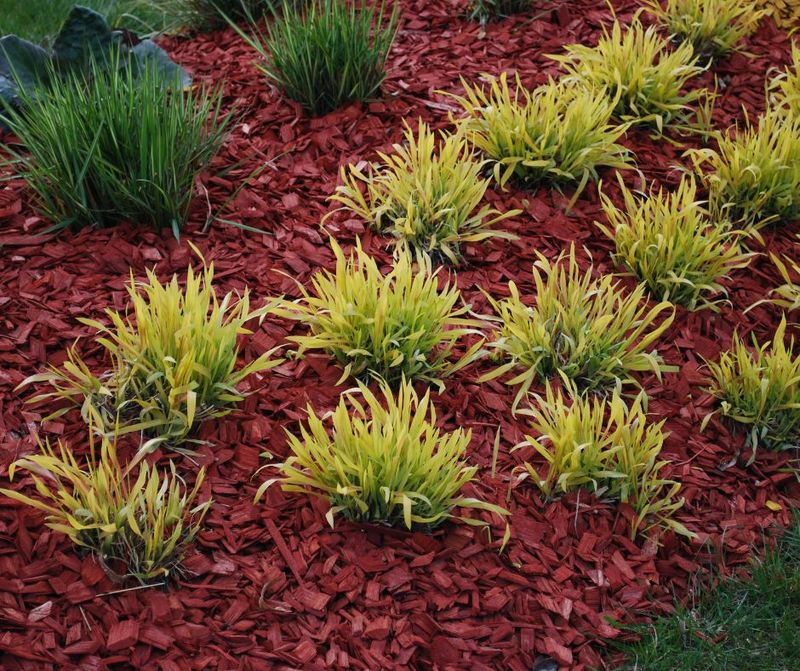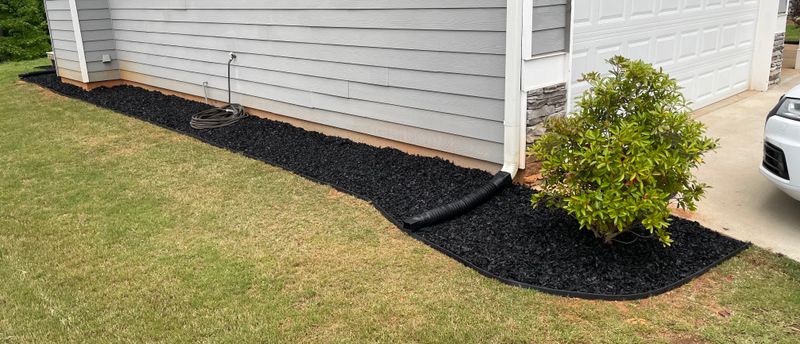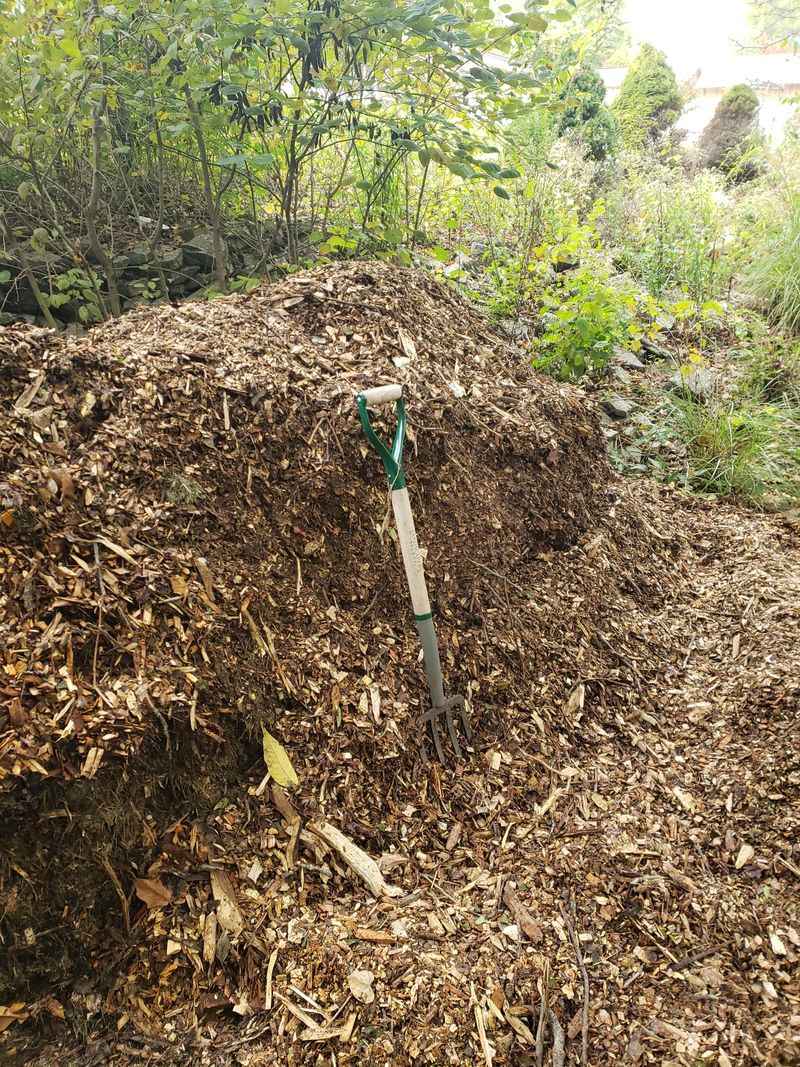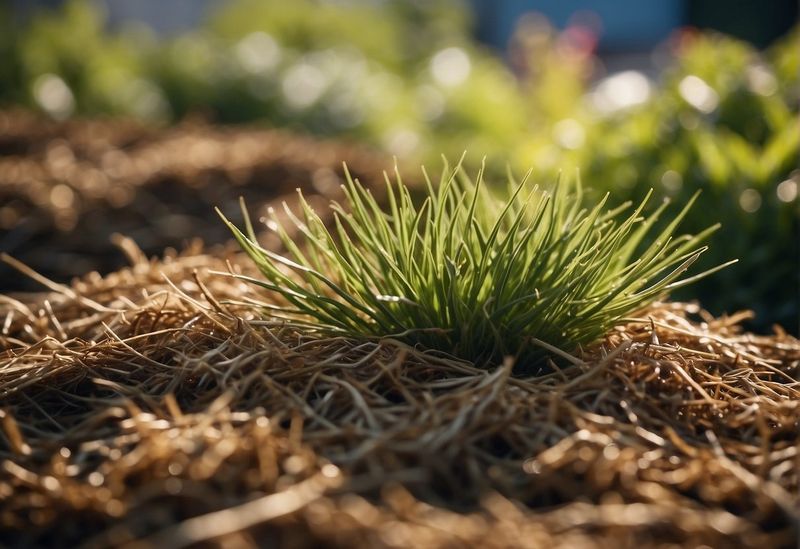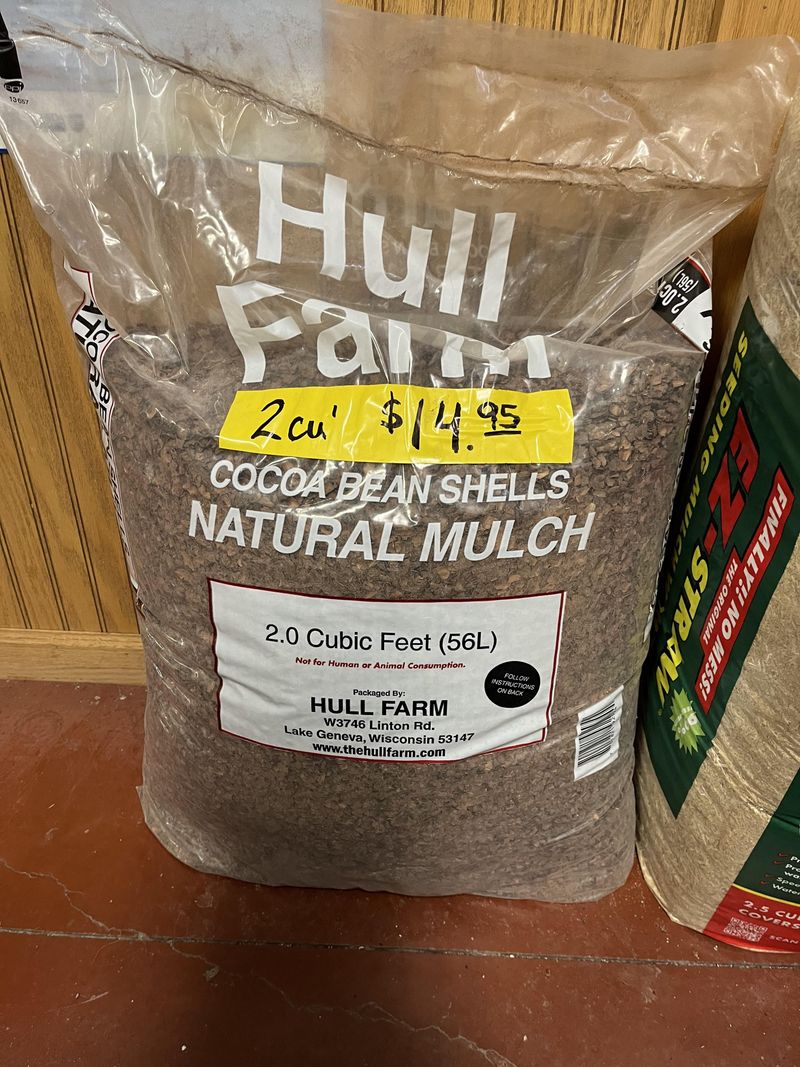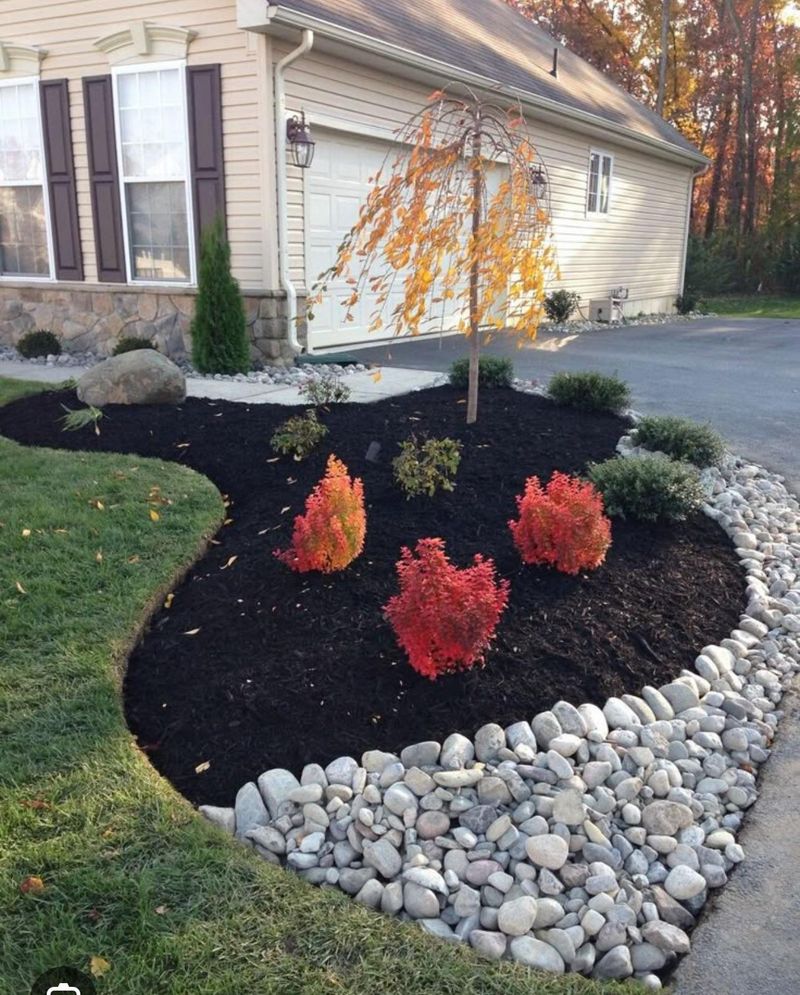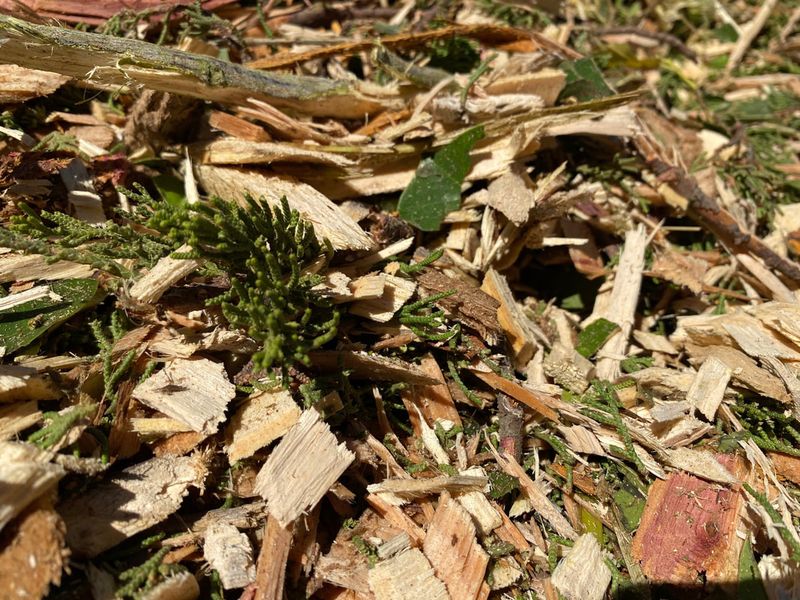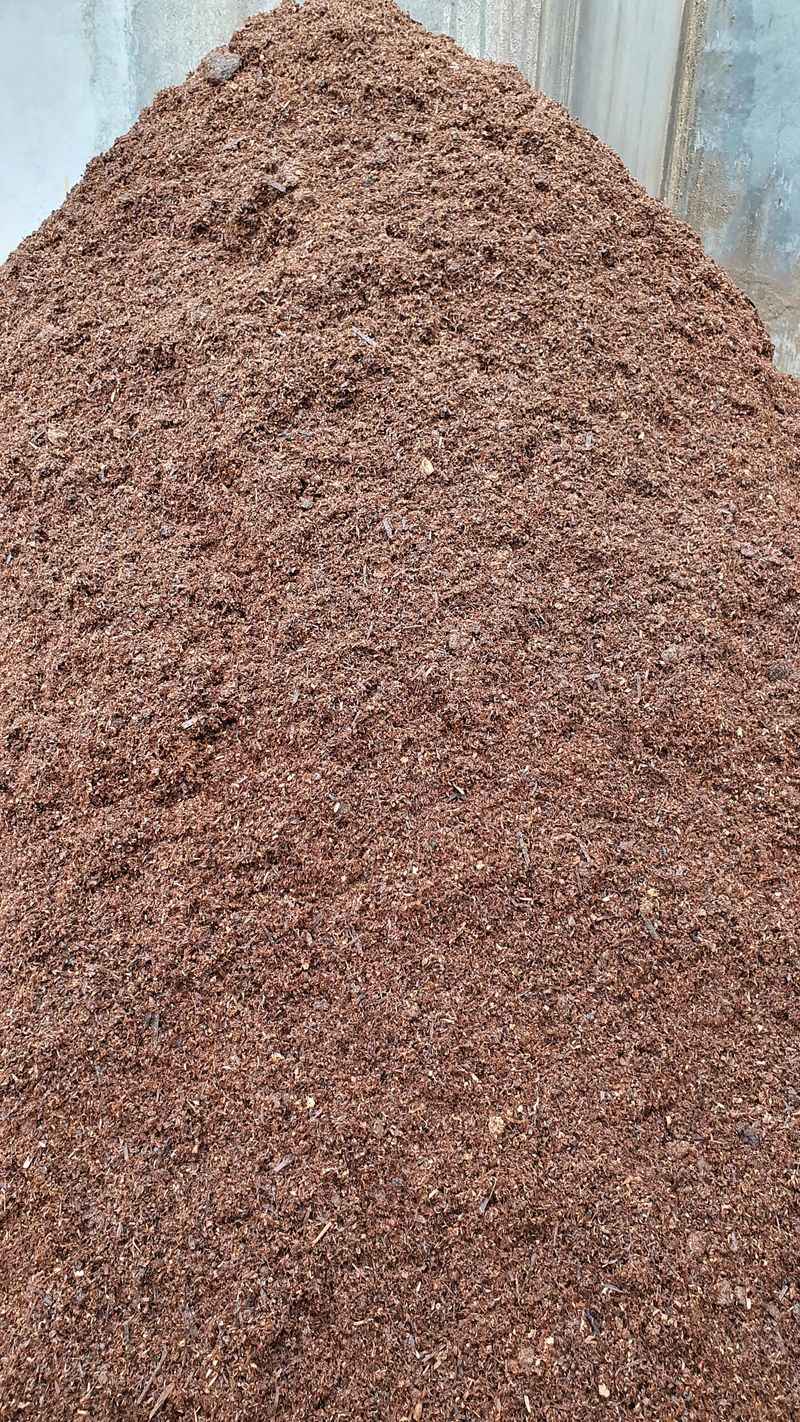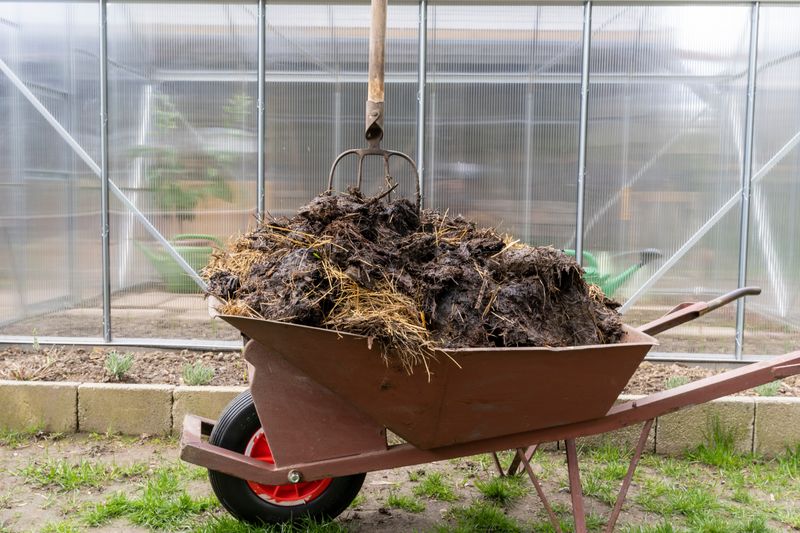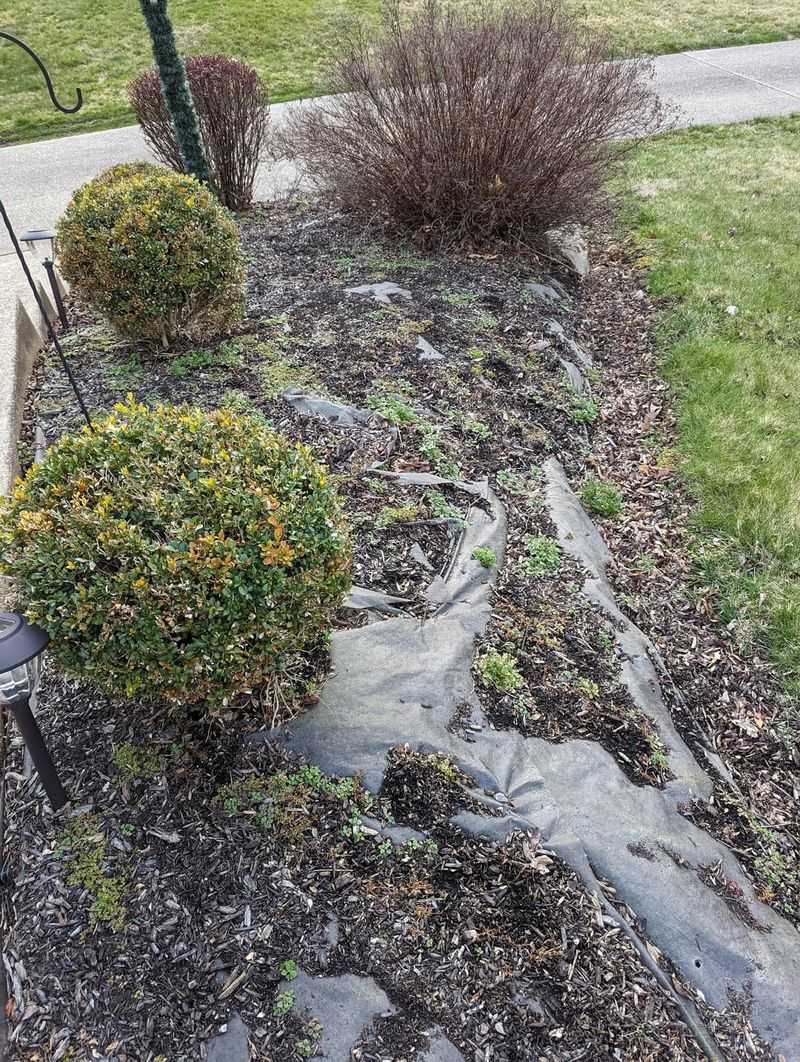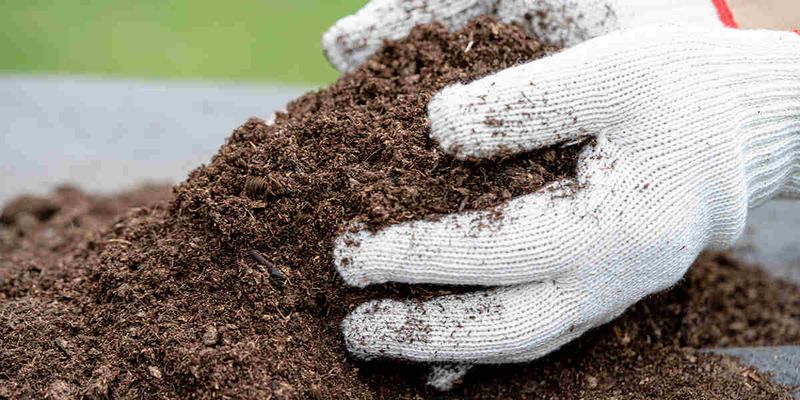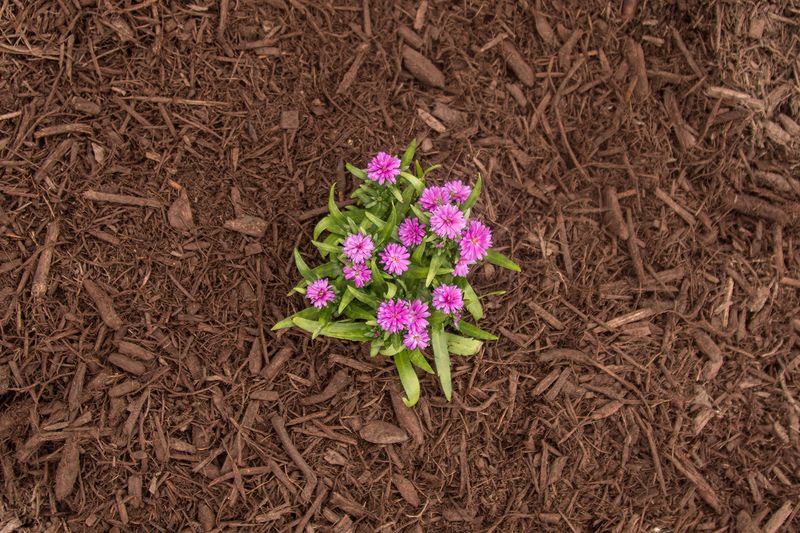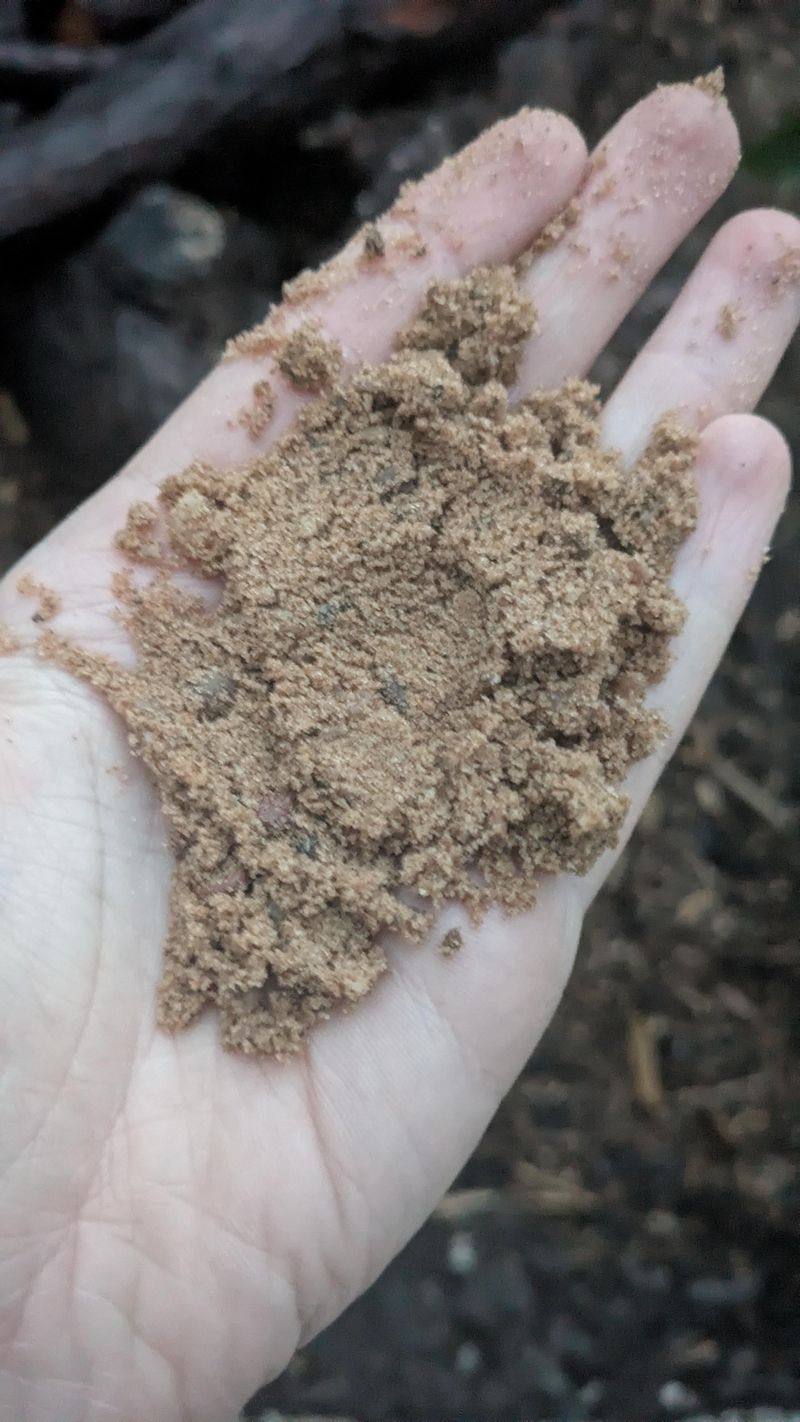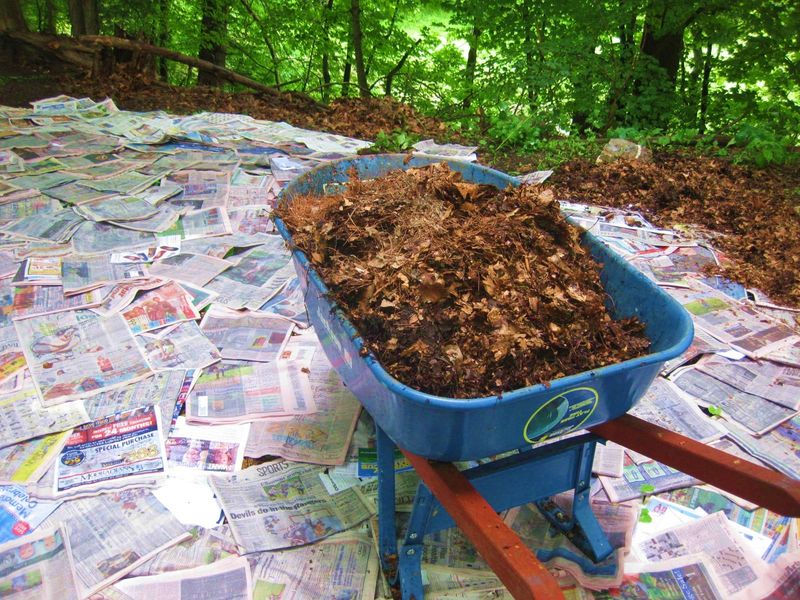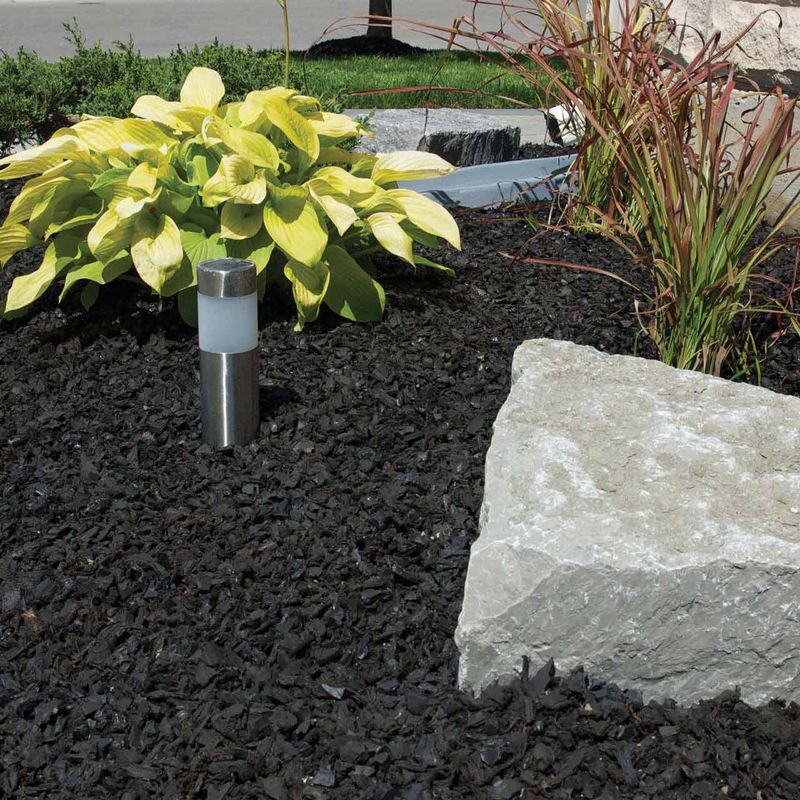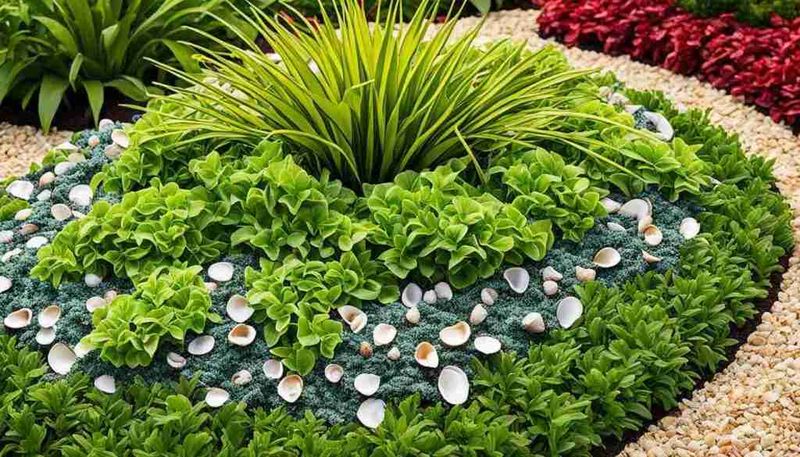Mulch seems like a simple garden add-on, but I’ve learned the hard way that not all mulch is created equal. Some types may look nice at first but end up doing more harm than good once the season gets going.
I’ve dealt with mulch that baked my plants, encouraged mold, or turned into a weedy mess I had to fight all summer. That’s why I’m now a little pickier about what I spread around my flowers.
If you want healthy blooms without a maintenance nightmare, it’s worth taking a closer look at which mulches to skip—and which ones can truly support your garden goals.
1. Dyed Wood Mulch
Those vibrant red and black dyed mulches might catch your eye at the garden center, but they often contain harmful chemicals. The dyes can leach into soil and potentially contain contaminants from treated wood sources.
Over time, I’ve noticed these mulches fade unevenly, creating a patchy appearance that requires frequent refreshing. Plus, some plants seem to struggle when surrounded by these artificially colored options.
Switch to natural cedar or cypress mulch instead. These alternatives provide similar aesthetic benefits with a natural color that ages gracefully, plus they contain natural oils that repel insects without introducing harmful chemicals.
2. Rubber Mulch
Made from recycled tires, rubber mulch seemed like an eco-friendly innovation when it first appeared. Unfortunately, it can leach zinc and other chemicals into your soil, creating toxic conditions for delicate flowering plants.
During hot summer days, I’ve found rubber mulch heats up significantly more than organic alternatives. This excessive heat stresses plant roots and can actually increase your watering needs rather than reducing them.
Consider pine straw as a better alternative. It’s lightweight, breaks down slowly to improve soil structure, and maintains a more moderate temperature around your plants while still providing excellent weed suppression.
3. Fresh Wood Chips
Recently processed wood chips might seem like a budget-friendly option, but they can cause significant problems in flower beds. Fresh wood actively draws nitrogen from soil as it decomposes, essentially stealing this vital nutrient from your flowering plants.
Last spring, I used fresh chips around my perennials and watched them struggle all season long. The plants showed yellowing leaves and poor bloom production – classic signs of nitrogen deficiency.
Aged wood chips make a much better choice. After composting for at least six months, they’ve already gone through the nitrogen-depleting phase and will nourish rather than compete with your flowers.
4. Hay Mulch
Hay might seem like an inexpensive natural option, but it’s practically a weed seed delivery system. Unlike straw, hay contains numerous seeds that will quickly sprout throughout your carefully planned flower bed.
My neighbor once used hay around her daylilies, thinking it would break down nicely. By midsummer, she was spending hours pulling countless weeds that had germinated from the hay itself, creating more work than the mulch saved.
Straw makes a superior alternative if you want that golden, natural look. Properly processed straw contains minimal seeds while providing similar moisture retention benefits and eventually breaking down to improve soil structure.
5. Cocoa Shell Mulch
The rich chocolate scent and attractive appearance of cocoa shell mulch makes it tempting for flower beds. However, this mulch contains theobromine, the same compound that makes chocolate toxic to dogs and cats.
Beyond pet safety concerns, cocoa shells tend to develop an unpleasant white mold in humid conditions. After a rainy week, my previously beautiful mulch layer looked like it had been dusted with powdered sugar – not exactly the aesthetic I was going for.
Buckwheat hulls provide a similar fine-textured, dark appearance without the pet toxicity or mold issues. They interlock nicely to stay in place and decompose gradually to improve soil quality around your flowers.
6. Rocky Mulch
Decorative stones and gravel might seem like a low-maintenance, permanent solution for flower beds. The reality is quite different – rocks heat up significantly in the sun, creating stress for plant roots and increasing water evaporation from the soil.
Removing or replacing stones becomes an enormous hassle once they’ve settled into the soil. When I tried to refresh a small rock-mulched area last year, each stone had to be individually picked out – a tedious job I wouldn’t wish on anyone.
Composted leaf mold offers a better approach for perennial beds. It maintains cooler soil temperatures, adds valuable organic matter as it breaks down, and can be easily refreshed or incorporated into the soil when needed.
7. Grass Clippings
Fresh lawn clippings might seem like free mulch, but they quickly mat down into a water-repelling layer that can suffocate your soil. The dense, decomposing mass often develops a slimy texture and unpleasant odor during rainy periods.
Many homeowners don’t realize that grass clippings from treated lawns can transfer herbicides to sensitive flowers. My friend’s petunias mysteriously died shortly after she mulched with clippings from her recently treated lawn – a costly lesson.
Properly composted grass makes a much better garden addition. By allowing clippings to fully decompose in a compost pile first, you’ll create a nutrient-rich soil amendment that can be mixed with other mulches for ideal flower bed protection.
8. Construction Wood Mulch
Recycled construction waste sometimes finds its way into cheap mulch products, bringing potentially harmful chemicals along. These materials may contain pressure-treated wood with arsenic, lead paint chips, or other construction chemicals toxic to plants and soil.
The varying sizes and textures of construction wood mulch create an uneven appearance that lacks the polished look most gardeners want. When my community garden received a donated batch, we quickly realized it contained splinters, nails, and even bits of plastic.
Hardwood bark mulch from responsible forestry sources provides a safer, more attractive option. Its consistent texture creates a professional appearance while breaking down at an ideal rate to nourish your flowering plants.
9. Sawdust Mulch
Fine sawdust creates a dense mat that can prevent water from reaching plant roots effectively. Its extremely high carbon-to-nitrogen ratio severely depletes soil nitrogen as it decomposes, starving your flowers of this essential nutrient.
During heavy rains, I’ve watched sawdust float away from beds, creating a mess throughout the garden. The fine particles also tend to blow around on windy days, making maintenance a constant challenge.
Wood shavings offer a better texture alternative if you prefer a light-colored mulch. The larger pieces allow better water penetration while still suppressing weeds, and they’re heavy enough to stay in place during typical weather conditions.
10. Uncomposted Manure
Raw animal manure seems like natural plant food, but it can actually burn tender roots and flowers with excessive nitrogen. The strong odor makes garden enjoyment difficult, and it often contains viable weed seeds that will quickly populate your beds.
Last summer, my neighbor applied fresh chicken manure around her roses. Within days, the leaves showed burning at the edges, and the smell made sitting on her patio nearly impossible for weeks.
Well-aged compost creates a superior growing environment without the drawbacks. After proper composting (at least six months), manure transforms into sweet-smelling, nutrient-balanced material that feeds plants gradually without burning or odor issues.
11. Plastic Mulch
Black plastic sheeting might effectively block weeds, but it creates numerous problems in ornamental beds. Water runs off rather than penetrating to roots, soil organisms can’t move freely, and the artificial appearance detracts from your flowers’ natural beauty.
Removing plastic becomes increasingly difficult as plants grow and roots entangle with the material. After trying it in one section of my garden, I spent hours carefully cutting away deteriorating plastic fragments that had become embedded in the soil.
Shredded leaves make an excellent natural alternative that accomplishes the same weed-suppression goals. They allow proper water infiltration, support beneficial soil life, and gradually decompose to improve soil structure around your flowering plants.
12. Peat Moss
Once a gardening staple, peat moss is now recognized as an environmentally problematic choice. Harvesting destroys sensitive bog ecosystems that take thousands of years to develop, making it one of the least sustainable mulch options available.
Beyond the environmental concerns, dry peat moss actually repels water rather than absorbing it. After a dry spell last August, I noticed water beading up and running off my peat-mulched containers instead of soaking in where plants needed it.
Coconut coir provides similar water-retention benefits with a more sustainable footprint. Made from coconut husks (a byproduct of coconut processing), coir breaks down more slowly than peat while providing excellent moisture management for your flower beds.
13. Walnut Shell Mulch
Ground walnut shells create an attractive, long-lasting mulch surface, but they harbor a hidden danger for many plants. Walnut shells contain juglone, the same natural herbicide found in walnut trees that prevents many flowers from growing properly.
After applying walnut shell mulch around my mixed perennial bed, several plants (particularly my prized foxgloves) began to yellow and decline despite adequate water and fertilizer. It took some research to realize the mulch itself was the culprit.
Almond shells provide a similar appearance and texture without the toxic effects. They break down more slowly than wood mulches while adding interesting texture to your garden beds, and they work well with most flowering plants.
14. Fine Sand
Sand might seem like a good option for drainage improvement, but it quickly compacts when used as mulch, forming a concrete-like layer that prevents water penetration. The fine particles can also wash into low spots during heavy rain, creating uneven garden surfaces.
During hot weather, sand heats up dramatically, potentially cooking nearby plant roots. My experiment with sand mulch around desert plants actually created more heat stress than the plants would naturally experience in proper soil with appropriate mulch.
Expanded shale or perlite makes a better mineral-based alternative for drainage improvement. These lightweight materials won’t compact or overheat, and they create permanent air pockets in the soil while allowing water to flow through to plant roots.
15. Glossy Magazine Paper
Some gardening tips suggest shredded paper as mulch, but glossy magazine pages contain inks, dyes, and coating chemicals that can leach into your soil. The slick surface also tends to mat down when wet, preventing proper air circulation to plant roots.
After a rainstorm, paper mulch can create a soggy mess that takes days to dry out. My attempt to recycle old catalogs as mulch resulted in a slimy layer that attracted slugs and actually increased pest problems rather than deterring them.
Plain cardboard (with tapes and labels removed) makes a more garden-friendly paper product for weed suppression. It breaks down cleanly, contains fewer chemicals, and can be topped with a more attractive organic mulch for better appearance.
16. Synthetic Mulch Pellets
Colorful polymer-based mulch pellets might promise years of weed suppression without decomposition, but they create long-term environmental issues. These non-biodegradable products eventually break down into microplastics that permanently contaminate your garden soil.
Strong winds and heavy rains can displace these lightweight pellets, scattering them throughout your yard and beyond. After trying them in a small section last year, I’m still finding bright blue pellets in surprising places throughout my garden.
Natural cork granules provide similar low-maintenance benefits without environmental concerns. Cork is sustainable, biodegradable, lightweight yet wind-resistant, and provides excellent moisture retention while slowly breaking down to improve soil structure.
17. Seashell Mulch
Crushed seashells create a striking decorative mulch, but they gradually release calcium carbonate that raises soil pH. This alkaline shift makes it difficult for acid-loving flowers like azaleas, hydrangeas, and many other popular garden plants to access essential nutrients.
The sharp edges of crushed shells can make weeding and planting uncomfortable, as I painfully discovered while trying to add new perennials to my shell-mulched coastal garden. The shells also reflect heat and light intensely, potentially scorching delicate plant tissues.
Pine needle mulch (also called pine straw) offers a better option for acid-loving flowers. It naturally maintains lower soil pH while providing excellent weed suppression and a distinctive appearance that works well in ornamental beds.

